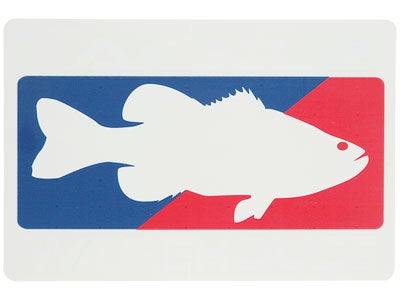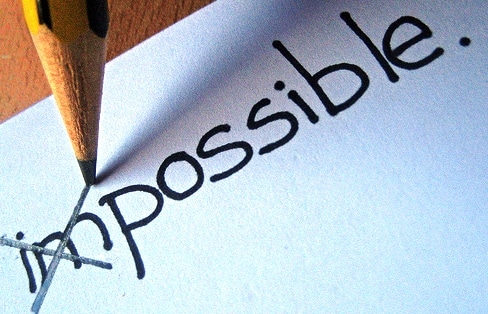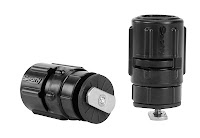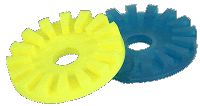________________________________________________________________________
Jesse Reynolds is a good friend and fellow kayak fisherman who has a passion for DIY and teaching others how to do it. He has a new page called "Installation to Application" here at paynespaddlefish.com where he will be able to bring cool rigging ideas and helpful tips to everyone. The tab for Jesse's section is up top and I will also post them as a post on the front page when they come out. Enjoy this first installment of "Installation to Application"
_______________________________________________________________________
Templates
by Jesse Reynolds
In this ever growing sport we all love, we’ve seen advances on most if not all aspects of Kayak Angling. One advancement I know many kayakers (myself included) enjoy are the accessories offered for tailoring a kayak to one's own preferences and style of fishing. You can look through any website that offers the vast array of aftermarket parts/accessories and be guaranteed that at some point in the past someone has said to his buddy, “you know what would be awesome? A ___ that does this___.”, or someone has spent hours in their garage bending and drilling materials in to an on the water application that suited their needs. You can also bet that those same people are the ones who made an idea or a prototype in to a reality and thus, have helped the sport grow to all of our benefit.
One such product I’d like to talk about is the Silent Traction System (STS) Kits offered at retailers such as Hook1. STS is one of the more basic accessories but none-the-less probably one of the best investments and easiest installations you can do. I mean, why would you glide up to your spot, sneaking beneath the radar only to drop your scissors or bang your rods around while getting situated? Yes STS can increase your odds tremendously but like most things, it’s not indestructible. Your standard kit comes with several precut pieces (circles and rectangles) as well as two larger pieces so you can cut your own shapes to fit your application. In my first two weeks with the STS installed I quickly learned that I was going to need more of the circle pieces that are cut to fit around your scupper holes so I saved the backing from the last pre-cut circle I had and made a template out of some thin card stock. Templates can save you time and a lot of headaches when it comes to making your cuts on STS, so we will show you how to make templates to match the factory circles and rectangles as well as a DIY radius gauge for matching the factory rounded edges on those pre-cut pieces.
Making a Radius Gauge
We will start by making our radius gauge because you will need it to make the circle pieces as well as those rounded corners we spoke about for squares/rectangles.
To make your radius gauge and templates you will need a few items commonly found around the house.
· Ruler - You will need one at least 6 inches long with a good straight edge
· Card Stock - I ripped off the back cover of a note book for this. You will want at least 6 inch lengths
· Pencil
· Small finishing nail
· Hammer
· Razor blade or Razor knife of some sort
· A small piece of fine grit sandpaper
Making the Radius Gauge
1 . Cut a strip of card stock, 1 inch wide X your desired length. 6 – 8 inches will be enough for most applications.
2 . Draw a line the length of the card stock down the middle (1/2in. from the leading edge will get your centerline for a 1in. wide piece of card stock).
3 . Measure up from the bottom edge 1in. and draw a horizontal line across the strip. This will be your pivot point for making your circles or corners.
4 . From that point, measure the distance you want to use as your radius. I suggest making marks at 1/8, 1/4, 3/8, 1/2, 3/4, 1, 1 ½, 2, & 3 inch marks.
5 . Next with your finishing nail and hammer, tap the nail through each of your measured marks on the centerline.
Note: Remember to punch the nail through just enough for a pencil or pen to slip in the hole without excessive play as you will stray off your line if this happens.
Tip: Once you’ve made your radius gauge, take a piece of notebook paper and make a mass template with all your radius markings to help gauge what the corner radius is on a precut piece of STS. Then cut it in half and you can lay that on any piece of STS to find your radius.
 Making Templates
Using the Radius Gauge to make a Circle Template
Making Templates
Using the Radius Gauge to make a Circle Template
To make a Circle you must divide the diameter of the circle needed by half and that is the radius you will need to use. Example: If you are making a 4 in. circle use the 2 in. mark on your gauge.
1 . Grab a piece of card stock big enough for the circle you will be making.
2 . Place your gauge on the card stock making sure that you have enough room between the edges of the material and the spacing you will need for the size circle you will be making.
3 . Insert your finishing nail in the pivot line’s hole and place it on the cardstock.
4 . Hold the nail down firmly and insert your pencil in the appropriate length hole.
5 . Simply rotate the pencil and gauge around until you complete your circle.
To make a circle to fit around a scupper hole like the stock STS kit comes with you will need to take a few extra steps.
1 . Measure the scupper hole as a starting point. As an example we will use a 4 in. circle with a hole for a 1½ in. scupper.
2 . Use the Radius Gauge and the ¾ in. marked hole to create a 1½ in. circle but do not pick up the gauge from the card stock.
3 . Knowing that we want our circle to be a 4in. diameter, use the 2in. marked hole on the radius gauge and draw your second circle.
4 . Using the 4in., outside circle, cut out your template from the cardstock.
5 . Lastly, cut out the inside scupper hole circle using a razor blade. Tip: It is easier to cut out this piece by placing the razor on the line and turning the template instead of trying to make your cut by moving your hand. By doing this you will get a nice rounded circle and a factory finished look.
6 . Take your sandpaper and lightly sand the edges clean of any burs debris.
Your finished product should look like this and should match the factory piece.
Making a Rectangle Template with Rounded Corners
Making a rectangle is simple enough but we will show you how to make the rounded corners and match the factory STS piece. The factory cut Rectangular pieces are 4
15/16 in. long X 2¾ in. wide with a ½ in. radius for the corners.
1 . Start by measuring out your rectangle to the above measurements.
2 . At each corner measure the distance of your desired radius to make a box in each corner. Remember we are using the ½ in. radius
3 . Once you’ve drawn your boxes in the corners, take the radius gauge and place the axis point on the inside corner of the box.
4 . Now draw your rounded corners with your radius gauge using the ½ in. marked hole.
5 . Now cut out your template with your scissors.
Your finished template should look like this and will match the factory pre-cut piece perfectly.
Now next time you dig your foot in as you’re setting the hook and rip through your STS in the process, you don’t have to be worried about replacing the piece because you now have a template to re-create as many as you want. I hope this has helped some of you and maybe you feel a little more empowered to start coming up with your own designs but remember… make a template first.














